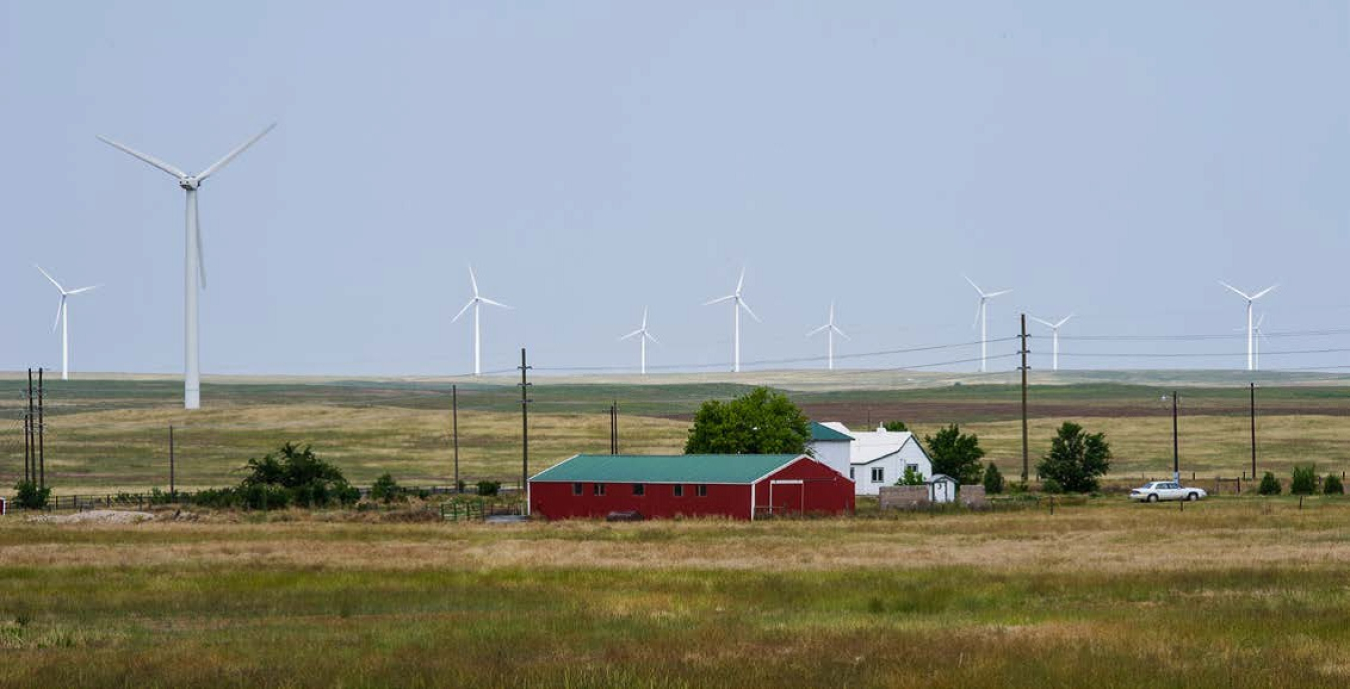A study led by LBNL provides unprecedented insight into the attitudes of Americans who live near U.S. wind turbines.
Wind Energy Technologies Office
May 8, 2018
A survey led by Lawrence Berkeley National Laboratory researchers found that more than half of respondents felt positive toward their local wind facility. Photo by Dennis Schroeder, NREL 30585
A study led by Lawrence Berkeley National Laboratory (LBNL) provides unprecedented insight into the attitudes of Americans who live near U.S. wind turbines. The National Survey of Attitudes of Wind Power Project Neighbors study involved a collaboration among four universities, one consultancy, and two U.S. Department of Energy research laboratories—LBNL and the National Renewable Energy Laboratory. The research was based on a 2015–2016 effort that collected data from 1,705 individuals in 24 states living within 5 miles of 250 large-scale U.S. wind power projects (although most individuals lived within just one-half mile of turbines).
The research was broken down into four separate areas: (1) overall analysis of attitudes across 1,700 wind power project neighbors, (2) fairness of and attitudes toward wind power project-planning processes, (3) predicting audibility and resulting annoyance from wind power project sounds, and (4) a comparison of strongly annoyed individuals living near U.S. turbines who have physical or mental symptoms to individuals living in similar situations in Europe.
The researchers found that more than half of respondents were positive toward their local wind facility, even when the respondents were limited to those within one-half mile of the turbines. However, the team also found that a significant minority of those living close to turbines had negative attitudes toward the projects, indicating opportunities for improvement in the development process.
Compensation is one such potential improvement. However, Ben Hoen, a research scientist at LBNL and the project lead, said, "It appears compensation is not a panacea. Those individuals who are receiving compensation are generally more positive than the rest of the population but, interestingly, not dramatically so. We found that other aspects of development are more important for neighbors."
The research suggests, for example, that attitudes can be strongly tied to whether the respondent could see or hear the turbines from his or her home. Specifically, if the turbine sounds were perceived as annoying and/or the respondent did not believe the turbines fit within the local landscape, his or her attitudes were strongly more negative.
Further, perceptions surrounding the planning and development process were found to strongly correlate with existing attitudes. If the developer was perceived as fair and transparent and the respondent felt he or she had an opportunity to influence the outcome of the project's planning, attitudes toward the turbines were significantly more positive. Several of the projects around which the respondents live were built many years ago, suggesting that attitudes remain entrenched long after the turbines are erected and that focusing on the planning process could help improve development outcomes.
A final area of research focused on "strongly annoyed" individuals—approximately 1% of the sample—who reported physical or mental symptoms related to the turbines. The most powerful correlate of being strongly annoyed was, again, perception of the planning and development process. The more fair the process was perceived to be, the less likely the respondent was to report having health symptoms related to the turbines.
Wind energy practitioners can use these results to tailor their development efforts and improve outcomes for the communities in which future wind energy is being considered.

